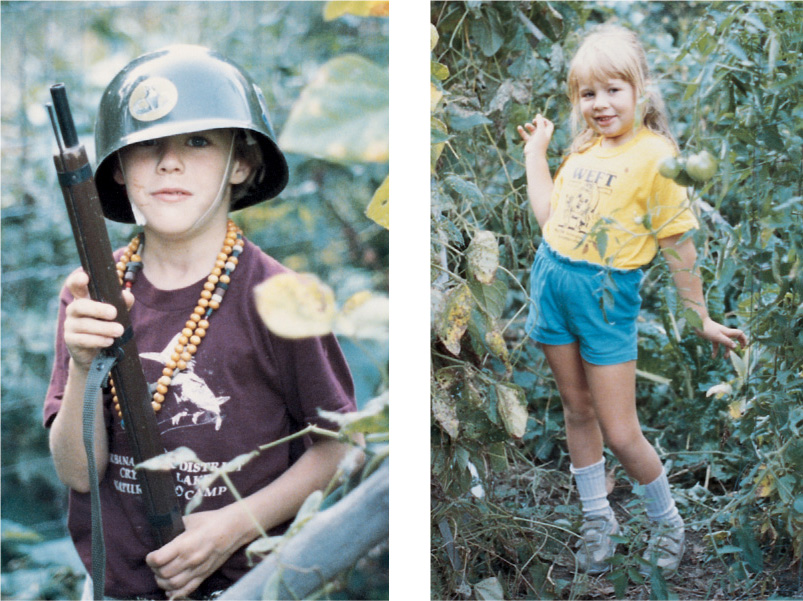592


Gender Development
593
- Theoretical Approaches to Gender Development
- Biological Influences
- Box 15.1: A Closer Look Gender Identity: More than Socialization?
- Cognitive and Motivational Influences
- Box 15.2: A Closer Look Gender Typing at Home
- Box 15.3: Applications Where Are SpongeSally SquarePants and Curious Jane?
- Cultural Influences
- Review
- Biological Influences
- Milestones in Gender Development
- Infancy and Toddlerhood
- Preschool Years
- Middle Childhood
- Adolescence
- Box 15.4: A Closer Look Gender Flexibility and Asymmetry
- Review
- Comparing Girls and Boys
- Physical Growth: Prenatal Development Through Adolescence
- Cognitive Abilities and Academic Achievement
- Personality Traits
- Interpersonal Goals and Communication
- Box 15.5: A Closer Look Gender and Children’s Communication Style
- Aggressive Behavior
- Box 15.6: Applications Sexual Harassment and Dating Violence
- Review
- Chapter Summary
594
Themes
 Nature and Nurture
Nature and Nurture
 The Active Child
The Active Child
 The Sociocultural Context
The Sociocultural Context
 Individual Differences
Individual Differences
assertion  tendency to take action on behalf of the self through competitive, independent, or aggressive behaviors
tendency to take action on behalf of the self through competitive, independent, or aggressive behaviors
 ne late autumn afternoon, the two children pictured below were playing in the backyard as their mothers, best friends for many years, were having tea on the deck. Colin, who was 5 years old, and Catherine, who was 4½, had played together since infancy. Even though they shared many of the same interests, they were also different in many ways. For example, Catherine hated movies that were the least bit violent or scary: as a toddler, she would not even watch Sesame Street because she was frightened of Oscar the Grouch. When asked to pause in her play to be photographed, Catherine happily complied and struck an expressive pose. In contrast, Colin loved action films full of car chases, fires, and explosions. His rifle and helmet testified to his fascination with guns and the military. Colin initially resisted the request to be photographed. After finally agreeing, he took an aggressive stance holding his toy gun.
ne late autumn afternoon, the two children pictured below were playing in the backyard as their mothers, best friends for many years, were having tea on the deck. Colin, who was 5 years old, and Catherine, who was 4½, had played together since infancy. Even though they shared many of the same interests, they were also different in many ways. For example, Catherine hated movies that were the least bit violent or scary: as a toddler, she would not even watch Sesame Street because she was frightened of Oscar the Grouch. When asked to pause in her play to be photographed, Catherine happily complied and struck an expressive pose. In contrast, Colin loved action films full of car chases, fires, and explosions. His rifle and helmet testified to his fascination with guns and the military. Colin initially resisted the request to be photographed. After finally agreeing, he took an aggressive stance holding his toy gun.
affiliation  tendency to affirm connection with others through being emotionally open, empathetic, or cooperative
tendency to affirm connection with others through being emotionally open, empathetic, or cooperative
Colin and Catherine exhibit some of the behavioral differences in assertion and affiliation that are often seen between boys and girls. Assertion refers to one’s attempts to exert influence over the environment, whereas affiliation refers to making connections with others. The traditional masculine role in most societies stresses self-assertion over interpersonal affiliation, with corresponding emphases on independence, competition, and task orientation. In contrast, the traditional feminine role stresses affiliation over assertion, with corresponding emphases on interpersonal sensitivity, supportiveness, and affection (Bassen & Lamb, 2006; Leaper & Smith, 2004).

collaboration  coordination of assertion and affiliation in behavior, which is associated with gender-role flexibility and more common among girls than boys
coordination of assertion and affiliation in behavior, which is associated with gender-role flexibility and more common among girls than boys
However, the goals of assertion and affiliation are not mutually exclusive: they are often blended together in a style known as collaboration (Leaper, 1991; Leaper, Tenenbaum, & Shaffer, 1999). Collaboration is associated with gender-role flexibility and, on average, is more common among girls than among boys. As with most gender differences, however, there is also, on average, considerable overlap between girls and boys in collaboration. Indeed, although some children act in gender-stereotypical ways, many girls and boys are, as you will soon see, quite similar to one another in a wide variety of behaviors.
gender-typed  behaviors associated with a given person’s gender
behaviors associated with a given person’s gender
In this chapter, we consider what might account for gender differences or similarities between girls and boys. Why do they have different preferences? How representative is their behavior compared with other children of their gender? Do they consistently demonstrate gender-stereotypical behaviors across different situations?
Developmental psychologists generally acknowledge the combined influences of biological, psychological, and cultural processes on gender development (Leaper, 2013) but differ in how much they stress particular factors. Some researchers argue that certain differences in boys’ and girls’ behavior reflect underlying biological differences that emerged over the course of human evolution (Bjorklund & Pellegrini, 2002; Geary, 1998). In their view, average gender differences in assertion and affiliation are partly attributable to genetic sex differences in brain structures and hormone effects. In contrast, other psychologists place more emphasis on social and cognitive influences (Bussey & Bandura, 1999; C. L. Martin, Ruble, & Szkrybalo, 2002). In general, most developmental psychologists contend that the role of biology in the development of gender-related differences must be considered in the context of the social influences of family, peers, teachers, and the culture at large.
595
cross-gender-typed  behaviors associated with the gender other than that of a given person
behaviors associated with the gender other than that of a given person
We examine two main questions in this chapter: (1) How similar or different are girls and boys in terms of psychological variables? (2) What might account for any differences? We first consider the biological, cognitive-motivational, and cultural influences that may contribute to gender development. Next, we outline the major milestones in children’s development of gender stereotypes and gender-typed behavior. Then we compare what actually is known about the similarities and differences between girls and boys in specific areas of development, including physical development, cognitive abilities and achievement, and personality and social behavior.
gender typing  the process of gender socialization and development
the process of gender socialization and development
Throughout our discussion, we use the terms sex and gender in distinct ways. Sex tends to imply biological origins for any differences between males and females. Therefore, we follow the convention of using gender as a more neutral term that refers simply to one’s social categorization as either female or male, and we use the term sex only when referring explicitly to biological processes, such as those involving sex hormones or genetic sex. In addition, the terms gender-typed and cross-gender-typed refer, respectively, to behaviors associated with a given person’s gender and to behaviors associated with the gender other than that of a given person. For example, playing with dolls is gender-typed for girls and cross-gender-typed for boys. Finally, the term gender typing refers broadly to the process of gender socialization and development.
Four of our seven themes are particularly prominent in this chapter. The theme of nature and nurture appears repeatedly, as perspectives vary in emphasizing the roles played by biological and environmental factors in gender development. The theme of the active child is apparent in cognitive theories of gender development that emphasize children’s roles in discovering what it means to be male or female and in socializing their peers into gender-appropriate roles. The sociocultural context is reflected in theories that emphasize the central roles that parents, teachers, peers, and the media play in shaping children’s gender development. Finally, the theme of individual differences also pervades the chapter as we attempt to account for the ways in which males and females are similar and different.